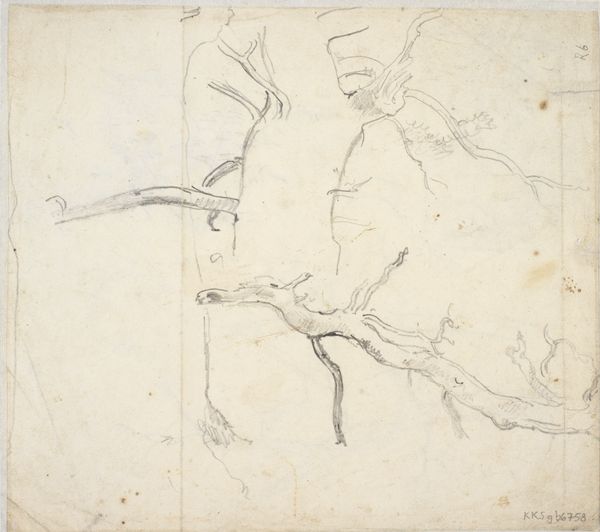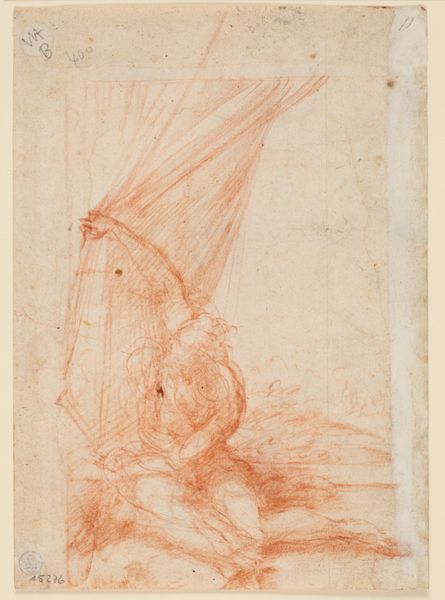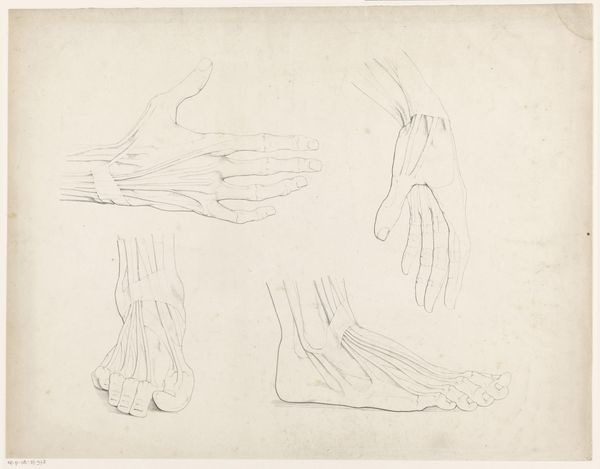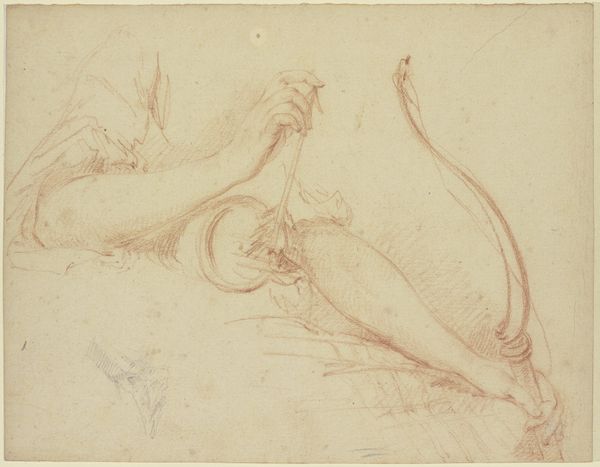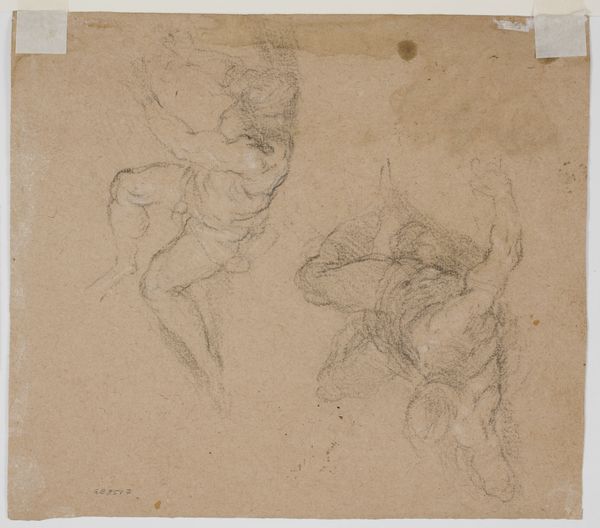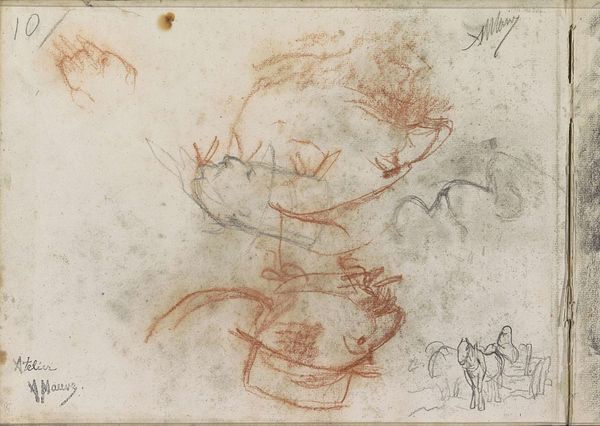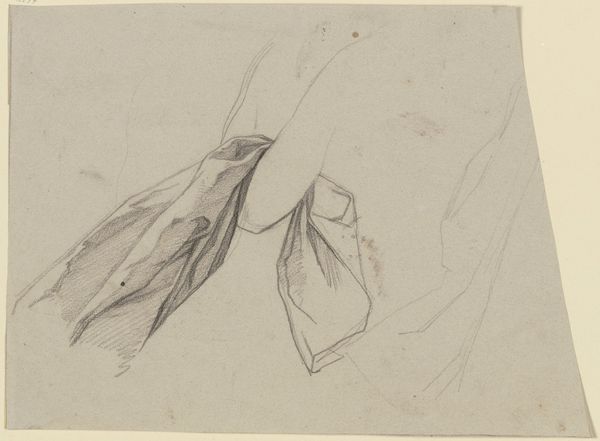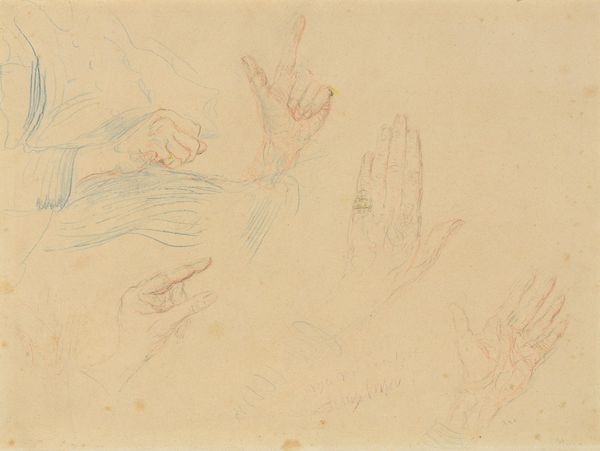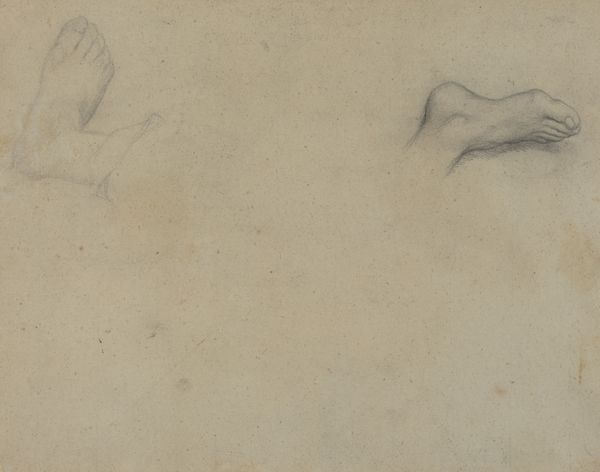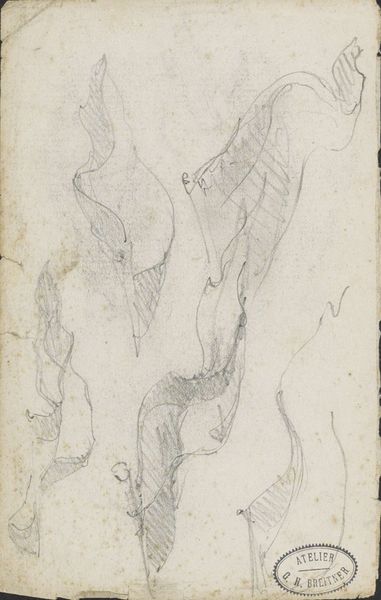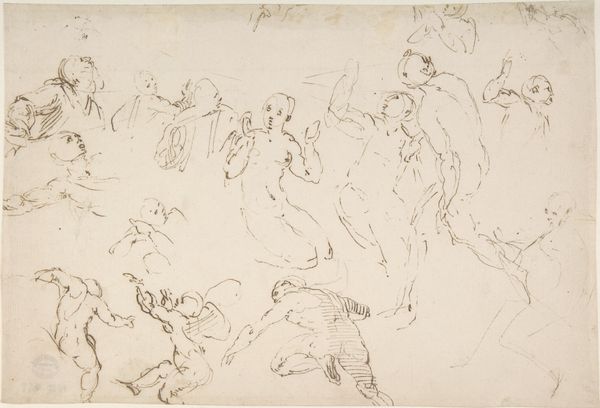
Ecorché: Two Studies of the Muscles of the Shoulder and of the Arm, Raised 1810 - 1863
0:00
0:00
drawing, print, pencil
#
portrait
#
drawing
# print
#
figuration
#
romanticism
#
pencil
#
academic-art
Dimensions: sheet: 10 1/4 x 15 9/16 in. (26 x 39.6 cm)
Copyright: Public Domain
Curator: Up next, we have Eugène Delacroix’s “Ecorché: Two Studies of the Muscles of the Shoulder and of the Arm, Raised,” created between 1810 and 1863. It's a print in pencil, housed here at the Metropolitan Museum. What are your initial thoughts? Editor: I’m struck by how vulnerable it feels. Almost like a whispered secret, rendered in these delicate lines of red chalk. It’s more about the fragility of the body than its strength. Curator: Yes, there’s something hauntingly beautiful in laying bare the very structure beneath the skin. The Romantic obsession with the inner workings of things, quite literally. Ecorché, meaning "flayed," it’s a visual key to Delacroix’s preoccupation with expressing profound emotion, of the sublime laid bare. Editor: You know, it’s fascinating how these anatomical studies often appear in academic settings. It's as if they strip away the romantic veneer that’s applied in artistic renderings, attempting to lay bare some objective truth about our physicality, although of course even here Delacroix imparts the unmistakable air of Romanticism to his vision. The muscle fibers look like feather, as if it's a study in the art of human flight instead. Curator: He wasn’t just interested in accuracy, but the tension, the dynamic energy within. Think of the flayed figures as powerful symbols – reminders of mortality but also resilience, emblems that can echo ideas of Christian martyrdom and sacrifice. It certainly anticipates the drama and passion in his later, larger history paintings. Editor: Precisely, It goes beyond the superficial representation, doesn’t it? I wonder what Delacroix himself thought about mortality as he rendered it through his work. He uses these classical symbols—the body—to express raw, deeply personal feelings, filtered by art. I find it difficult to decide which rendering I find more compelling to follow. Curator: And there's a vulnerability to these red chalk renderings that might've not come through otherwise. An ecorché is supposed to be all about showing off your mastery of anatomical science but what strikes us is an exercise of emotion laid bare... fascinating isn't it? Editor: Absolutely. It's an image to carry away and contemplate what we've felt together just now. Thanks for pointing out so well.
Comments
No comments
Be the first to comment and join the conversation on the ultimate creative platform.
